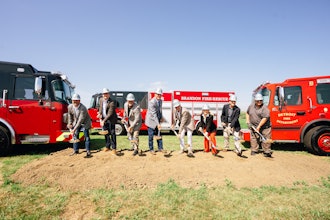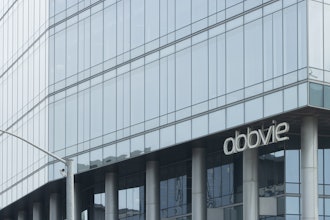
This article originally ran in the April 2013 issue of Food Manufacturing.
Interview with J. Tom Boer is a partner at Barg Coffin Lewis & Trapp, LLP
 Ammonia refrigeration leaks pose both safety and economic risks to food companies, but many are unaware of these hazards. Attorney J. Tom Boer spoke with Food Manufacturing about ammonia refrigeration regulations and how manufacturers can ensure their system’s safety.
Ammonia refrigeration leaks pose both safety and economic risks to food companies, but many are unaware of these hazards. Attorney J. Tom Boer spoke with Food Manufacturing about ammonia refrigeration regulations and how manufacturers can ensure their system’s safety.
Q: All food facilities with ammonia refrigeration systems are subject to potential enforcement by the EPA, but many companies don’t realize this. Why is there so little knowledge regarding EPA’s oversight of ammonia refrigeration systems in the food industry?
A: Federal regulation of ammonia refrigeration has a low profile for a number of reasons, including:
- Most food facilities do not have other operations regulated by EPA. Although EPA does inspect refrigeration systems, such inspections are relatively rare and focus on larger systems. As a result, the only interaction many facilities have with EPA is the scrutiny following an ammonia leak
- Since ammonia is an ancillary, rather than primary focus of these facilities, management may not be focused on the regulatory risks until an accident occurs
- Federal regulation has increased in the last couple of decades, including adoption of the Clean Air Act General Duty Clause in 1990 and the Risk Management Program requirements for larger systems, which became effective in 1999
Q: What EPA regulations regarding ammonia refrigeration systems affect food companies?
A: There are several key federal statutes and requirements:
- Leak Reporting Requirements: Emergency Planning and Community Right-to-Know Act (EPCRA) § 304 and the Comprehensive Environmental Response, Compensation, and Liability Act § 103. Releases of more than 100 pounds of anhydrous ammonia must be immediately reported to EPA’s National Response Center and certain state and local officials. Violations arise for both a failure to report and unjustified delay. Calling 911 will not satisfy the reporting requirement.
- General Duty Clause: Clean Air Act §112. Regardless of the size of an ammonia charge in a facility’s system, the Clean Air Act requires that a facility:
a) Identify hazards that may result from accidental releases
b) Design and maintain a safe facility
c) Take steps to minimize the consequences of any releases.
- Facilities with an ammonia charge in excess of 10,000 pounds are also required to implement a Risk Management Program, as spelled out at 40 C.F.R. Part 68. Components of the program are similar to the OSHA Process Safety Management Rule requirements and include hazard assessment, release prevention and emergency response.
- Ammonia Usage Reporting Requirements: EPCRA § 313. The Toxic Release Inventory requirements require facilities to file annual reports if they “otherwise use” 10,000 pounds of ammonia in any calendar year. EPA guidance indicates that only ammonia “added to” the system in a calendar year counts towards the threshold.
There are other environmental statutes which may become relevant in the event of a significant leak. For example, releases of ammonia into a water of the United States (such as a creek) may trigger enforcement under the Clean Water Act.
Q: If a violation of these regulations occurs, what penalties might a food plant face?
A: Food processing facilities often are shocked at the potential magnitude of fines related to ammonia leaks. EPA is authorized by most environmental laws to fine facilities up to $37,500 per day, per violation. Although actual penalties are typically lower, EPA will often threaten the maximum potential penalty during enforcement proceedings. For example, if EPA claims that a release was due to a facility’s neglect of the General Duty Clause for 180 days, the maximum potential penalty is nearly $6.8 million.
In settlement negotiations, EPA calculates penalties using enforcement policies that take into account factors including:
- The seriousness and duration of the violation (gravity)
- Any economic benefit achieved by the compliance failure
- The company’s net worth
- The duration of the violation
Violations for a failure to report a leak generally range from thousands of dollars up to the low-six figures if there are multiple violations. We commonly see EPA fine between $10,000 and $30,000 for failure to report or substantial delay.
Penalties for a release that EPA attributes to a violation of the General Duty Clause vary significantly based upon the specific facts. It is not unusual, however, to see penalties in the low six figures, with penalties in the millions where people are injured or killed. EPA’s focus on General Duty Clause violations has increased recently, as evidenced by the adoption of an enforcement policy tailored to such violations last June.
EPA may also seek injunctive relief, which can add substantially to cost. Such relief can range from a requirement for third-party compliance audits to replacing entire refrigeration systems with safer equipment, at a cost of millions.
Q: What are some common causes of ammonia leaks in food facilities?
A: There is no single recipe for ammonia leaks. The chemical leaks we see in our legal practice typically are caused by a facility-specific chain of events, often as a result of multiple underlying issues. One or more of four common themes often contribute:
- Operator error, such as inexperienced or hurried employees or contractors opening incorrect valves or applying water to pooled anhydrous ammonia
- The use of inconsistent materials (whether in original installation or in repair work) in the refrigeration system, such as brass, that are subject to corrosion and ultimate failure when exposed to ammonia
- A lack of routine maintenance or necessary capital improvements over an extended period of time
- Industrial accidents, for example, breaches of ammonia-containing pipes with a forklift
Q: Ammonia leaks at food plants seem to have been popping up in the news lately. Why do you think this is? Are ammonia leaks occurring more frequently?
A: It is hard to say whether ammonia leaks are occurring more frequently, or whether enforcement and media coverage of leaks has increased. One reason there may be more leaks is that the recession may have contributed to a reduction in routine maintenance and capital improvements to refrigeration systems, or a reduction in the number of employees supporting those systems. Also, many ammonia refrigeration systems are, quite simply, aging and, without substantial capital investment, face an increasing risk of failure.
There are two other trends that contribute to the higher profile of leaks when they do occur. First, EPA is increasing its enforcement in response to ammonia leaks, evidenced by an increase in the number of cases pursued by EPA, increasing penalties sought by EPA for leaks and identification of ammonia refrigeration system compliance as an enforcement priority in a number of EPA regions. Second, urban redevelopment has changed land use around many food facilities so that former industrial areas are redeveloped with commercial and residential buildings. As a result, the number of people at risk from an ammonia release outside of industrial settings has increased. Off-site injuries or deaths lead to higher penalties and increased media coverage.
Q: What safety precautions should a food facility take regarding its ammonia refrigeration system?
A: Ammonia is hazardous and a leak can cause injury or death. Facilities must recognize this hazard and devote appropriate resources to ensuring that their systems are safe, including:
- Prioritizing routine maintenance of refrigeration systems
- Promptly implementing needed capital improvements
- Implementing a robust Risk Management Program, whether required by the Clean Air Act or not, that engages employees and is not a rote annual exercise
- Training employees to report releases promptly to the authorities and, where there is any ambiguity in the reporting requirement, always err on the side of reporting
J. Tom Boer is a partner at Barg Coffin Lewis & Trapp, LLP – a San Francisco-based law firm providing nationally recognized expertise in environmental law and litigation. He can be reached at [email protected] or www.bcltlaw.com.






















